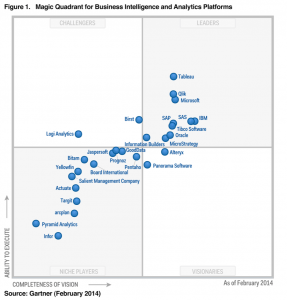New Approaches to Analytics to Revolutionize Logistics
Three stages are commonly used to categorize an organizations maturity in their use of business intelligence and analytics technologies:
- Descriptive: What happened in the past?
- Predictive: What will (probably) happen in the future?
- Prescriptive: What should we do to change the future?
Descriptive analytics typically means good old fashioned business intelligence (BI) – reports and dashboards. But, there is a newish technology in the Descriptive category – one that I might argue is worthy of a category in its own right. That technology is visual data discovery. The visual data discovery approach has a rapidly growing fan base for many reasons, but one stands out: It increases the probability that business managers will find the information they need in time to influence their decisions.
Visual data discovery tools typically provide:
- Unrestricted navigation through, and exploration of, data.
- Rich data visualization so that information can be comprehended rapidly.
- The ability to introduce new data sources into an analysis to expand it further.
By helping to answer a different class of question – the unanticipated one – visual data discovery tools increase the probability that managers will find the information they need in time to influence their decisions. And that, after all, is the only valid reason for investing in business intelligence solutions.
If you have any opinions, you are welcome to leave a comment or send us message.





















































